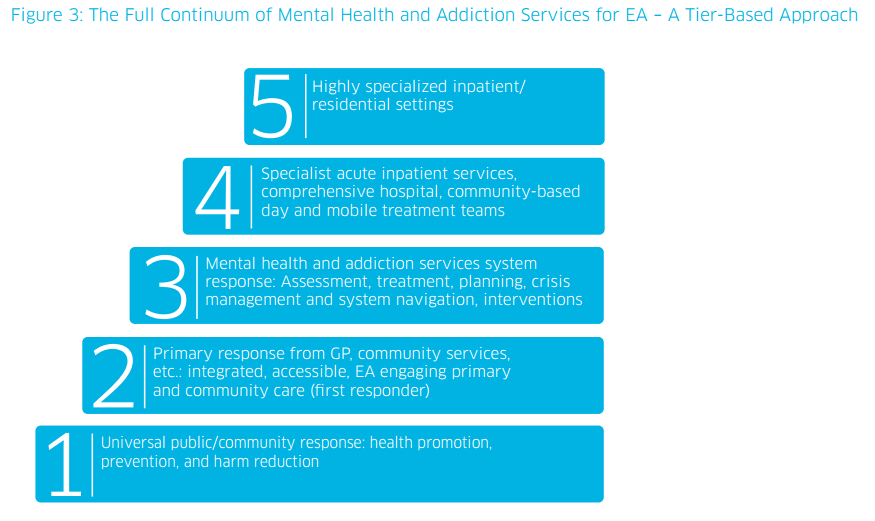Taking the Next Step Forward Building a Responsive Mental Health and Addictions System for Emerging Adults
This report, released by the Mental Health Commission of Canada (MHCC) considers the current state of Canadian and international policies and programs that support youth with mental health problems and illnesses transitioning into adulthood, argues that our current approaches are substantially limited, and offers a framework for bettering these practices in Canada. The term “emerging adult” (EA) is used to describe youth and young adults (ages 16-25), which captures much of the post-secondary population.
The report recommends the following actions to serve as a starting place for advancing the EA agenda in Canada:
Proposed National Actions
- Identifying EA as a priority population in a national action plan for mental health and addictions
- Establishing a national EA mental health initiative, including funding a longitudinal tracking study, a national centre of excellence, and a knowledge exchange strategy
- Producing a bi-annual national report card, reporting on outcome indicators for EA with mental health and addiction issues
- Establishing a national young adult advisory group
- Funding a Canada Research Chair in emerging adult mental health and addictions
Proposed Provinicial/Terriotorial Actions
- Including EA as a priority population in provincial/territorial mental health reform and action plans, with specific strategies for the most vulnerable groups
Establishing a premier-led inter-ministerial cabinet committee to oversee and assert policy implementation and provincial/territorial performance - Identifying a single ministry accountable for delivering and reporting in a provincial/territorial report card on outcomes for EA with mental health and addictions issues
- Developing and monitoring transition protocols and supports for youth aging out of child and adolescent services
- Confirming the provincial/territorial service continuum, including core services required at each tier
- Establishing a provincial/territorial EA advisory council with a clearly articulated and authentic role as a reference and leadership group
Proposed Regional Actions
- Including identification of EA as a priority population in any regional health service strategy, as well as an action plan for the most vulnerable EA
- Developing an accountability plan (such as regional report cards) to identify and report on engagement levels and outcomes
- Identifying the most pressing gaps in the full continuum of developmentally appropriate services, and taking action to develop capacity, with particular emphasis on delivering the core basket of services in a timely and accessible manner, including:
- EA inpatient beds/spaces, based on per capita/population requirements per 100,000
- Specialist EA, community-based, comprehensive day treatment spaces
- Specialist EA, community-based, mobile, high-intensity community team spaces
- First episode/early intervention screening, assessment, and treatment services for all diagnoses
- EA specialized system navigators
- Peer support and mentoring models that are integrated with clinical and treatment services to enhance engagement
- Family engagement and education services
- Transition team coordination resources to ensure engagement and commitment of cross-sectoral providers
- Ensuring the presence of universal prevention and health promotion strategies, as well as strategies across all tiers to minimize impairment, and to build skills, resiliency, and protective factors to support full community, social, and employment participation
- Developing and monitoring the implementation of regional transition protocols and resources, including regional transition coordination functions
Continuum of Services
The following continuum of services will support a system approach to EA. The continuum identifies specialist service responses and requirements of each of the tiers in order to meet the needs of the EA, and is adapted from continuum-based models from a number of provincial strategy documents.

View / Download
Browse Literature Highlights
July 7, 2017
International Student Mental Health
August 8, 2017

